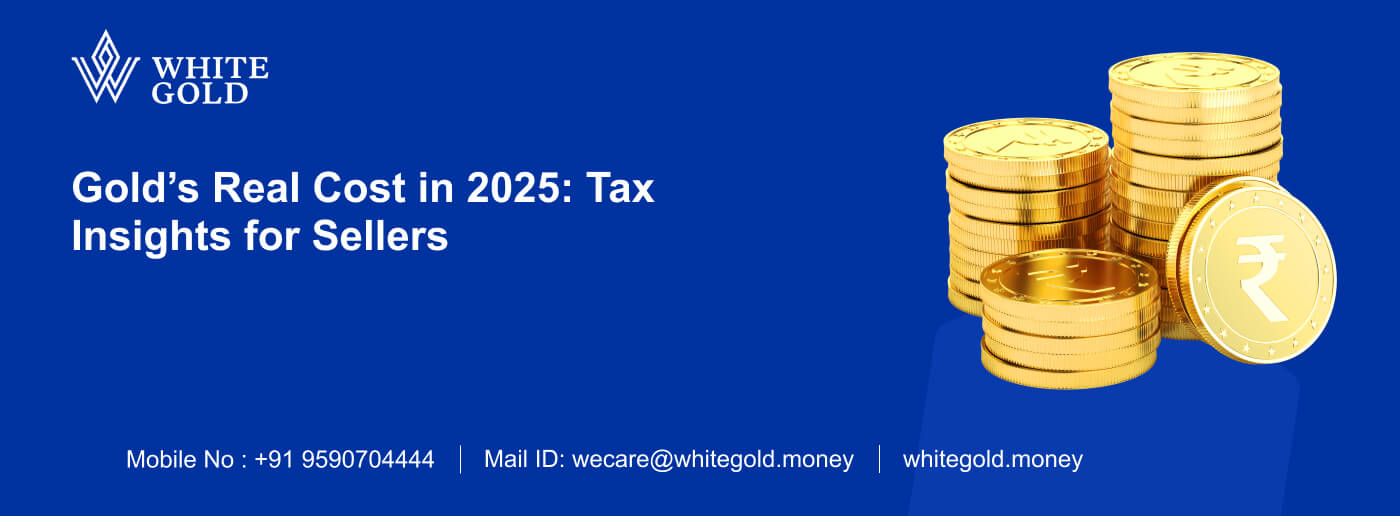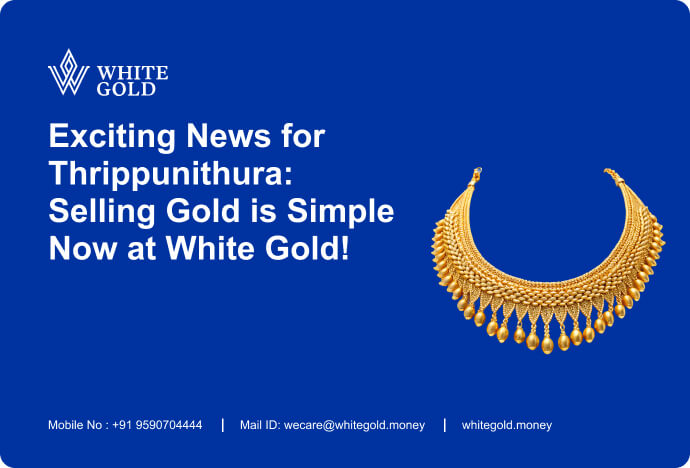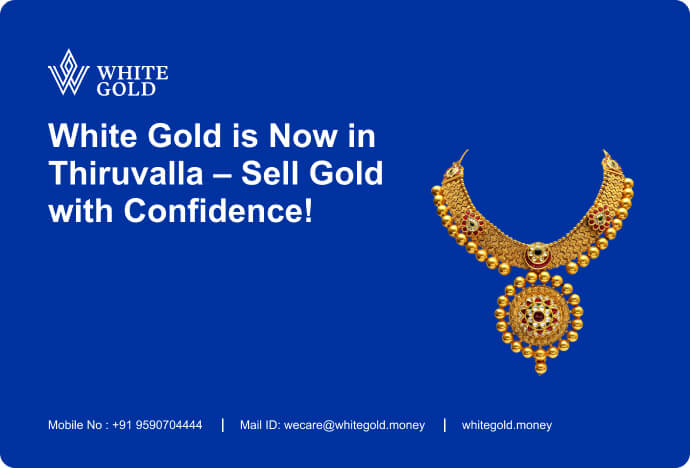White Gold Guide: The Real Cost of Gold After Taxes

5min read

Buying gold in India is kind of a tradition, a celebration, and often, an investment. While you are shopping for a wedding or a festival, you will notice one thing: the final gold bill is always more than the advertised rate. Ever wondered why that is? Why is there such a big difference between the displayed gold rate and what you actually end up paying?
Most buyers are left wondering how much tax on gold purchase in India actually applies and what’s included in that polished final price tag. If you have asked yourself these questions while holding your jewellery bill and blinking twice at the total don’t worry. You’re not alone. Let us break it down for you in the simplest way possible.
Gold Rate vs Final Price: What’s the Difference?
You walk into a store and see that gold is priced at ₹6,000 per gram. You do the math: 10 grams should cost ₹60,000, right?
Wrong.
Here is what’s really included in that final gold bill:
- Base Gold Rate (the price per gram you see advertised)
- Making Charges
- GST on both gold and making charges. Yes, it is double-layered
- Hidden margins or add-ons, in some cases
This means that for a ₹60,000 base value, your actual bill could easily climb to ₹65,000 or more depending on the jeweller’s policies and craftsmanship fees. So, the final amount on your bill will likely be significantly higher than the simple gram-to-gram calculation.
GST on Gold: The Main Tax You Pay
Let’s talk about the biggest tax you will encounter when buying gold GST. Most buyers focus only on the price per gram, but GST quietly stacks up behind the scenes. And yes, it applies to both the gold value and the making charges.
As of 2025, the GST on gold in India is split into:
- 3% GST on the gold value
- 5% GST on the making charges
Let’s learn this with an example:
You buy a gold chain with the following:
Gold value = ₹1,00,000
Making charges = ₹10,000
Now calculate:
3% GST on ₹1,00,000 = ₹3,000
5% GST on ₹10,000 = ₹500
Total tax paid = ₹3,500
That’s ₹3,500 added on top of what you already thought was the price. Surprise! This is why the final invoice always feels heavier than expected. But knowing the math helps you stay in control of your gold purchases.
Import Duty on Gold: It’s Already Included
You may not spot it on your jewellery bill, but a big chunk of tax is already paid before that gold ever reaches your favourite showroom.
India imposes significant import duty on gold, which gets factored into the base rate itself so even the price per gram you see already carries hidden tax weight.
As of now:
- Basic Customs Duty (BCD) = 12.5%
- Agriculture Infrastructure and Development Cess (AIDC) = 2.5%
So, a total import duty of 15% is already built into the gold rate you see.
This means even before GST and making charges, the base rate of gold already includes taxes paid by the importer and those costs are passed on to you. So, if you have ever wondered how much tax on gold purchase in India truly exists, it is more than just what appears on your invoice.
Making Charges:
Next, let’s talk about something just as important making charges and why they can differ so much across jewellers. Every time you buy gold jewellery, you pay making charges the cost of craftsmanship.
These charges usually vary, depending on:
- The type of ornament
- Brand/store policies
- Manual vs machine-made jewellery
Making charges are usually calculated either as a fixed rate per gram or as a percentage of the gold value, generally ranging between 8% and 20%. And yes, don’t forget you pay 5% GST on making charges, too.
How to Buy Smart & Save
- Compare making charges. Some jewellers are negotiable for bulk or high-value purchases.
- Avoid surprise charges by requesting a final quote with taxes.
- Prefer BIS-hallmarked jewellery. This ensures purity and protects you at the time of resale.
- Choose coins and biscuits for investment. These often have lower making charges than jewellery.
- Investors can explore digital gold or Sovereign Gold Bonds as they offer zero making charges and sometimes even tax benefits.
Why This Matters When You Sell
Here is something most buyers don’t know:
When you sell gold, you get paid for the net weight and purity not for the taxes or making charges you paid earlier. So, GST is not refundable and making charges won’t be recovered.
Let’s say you bought gold for ₹71,250 and want to sell it next year. If the market rate stays the same, a gold buyer will likely offer ₹60,000 based on gold weight and purity. You lose ₹11,250 unless prices rise significantly. That is why buying smart = selling smart.
Why This Matters When You Sell
Taxes may be invisible, but they hit your pocket hard when buying gold. What seems like a great deal can quickly turn expensive once GST and making charges kick in. Understanding how much tax on gold purchase in India adds up will help you avoid surprises at checkout.
Every gold buyer and seller should know what goes into their pricing so you can make better decisions. Thinking of selling your gold? Bring your gold to White Gold today and walk out with the best price transparent, trusted, and tax-free on your return.







